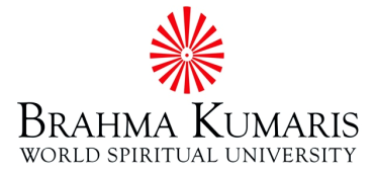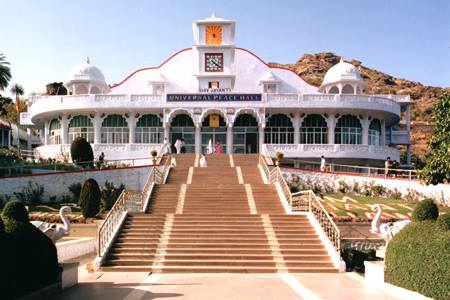
Founded as ‘Om Mandali’ was renamed as ‘Brahma Kumari’ at later stage and affiliated to UN as Brahma Kumaris World Spiritual University, has now over 800,000 students at over 7,000 centers in 110 countries.
A very few people of Sindh may be aware of Brahma Kumari, a Global Spiritual Organization, which was founded in their own city Hyderabad in 1932 by a gem trader Lekhraj Kirpalani to organize and empower the womenfolk and develop the leadership qualities among them.
Generally known as the Brahma Kumaris, the movement was founded with the name ‘Om Mandali’, which later was renamed as Brahma Kumari and is officially titled as The Brahma Kumaris World Spiritual University (BKWSU). Brahma Kumaris means ‘daughters of Brahma’ that reflect the emphasis placed on the leadership of women in the organization.
History
The organization was founded in Hyderabad, Sindh during British colonial era by Brahma Baba, formerly known as Dada Lekhraj Kripalani, who had a series of visions depicting world transformation.
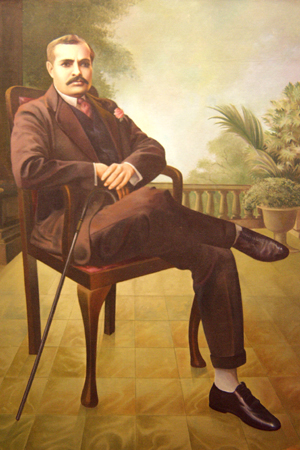
Dada Lekhraj Kirplani born in Hyderabad initiated his career as a carpet salesman. Later he entered the diamond and jewelry trade along with Sevakram Koobchand Daswani. They started a business under the title of ‘Lakhi Raj, Sevak Ram and Sons’. Their business address was Surnana Mansion, 7-1, Lindsay Street, Opposite Sir Stuart Hogg Market Calcutta. However, both of them maintained family homes in Hyderabad, Sindh.
According to the Brahma Kumaris, Lekhraj Kirpalani (1876–1969), a devout Vaishnavite (a specific Hindu tradition), received a series of visions as he was approaching the age of 60. The visions revealed the world experiencing great suffering from man-made devastation. In recognition of his special status, Kirpalani became known as Brahma Baba and the group around him was initially known as Om Mandali. According to certain accounts, as part of his trade, Dada Lekhraj met many women and observed their far-from-healthy social conditions, and founded the organization to work for social reformation.
Brahma Baba handed over his wealth to a trust consisting of a small group of his female followers. He encouraged women to take leadership roles and asked all his students to work for their personal spiritual development and to practice celibacy. These were radical challenges to the traditional positions of women in Sindhi culture. The group soon moved to Karachi and grew to between 300–500 members living in a relatively insular community.
Brahma Baba spent the rest of his life bringing people of all cultural, socio-economic and religious backgrounds together to rediscover and develop the spiritual dimensions of their personal lives and to integrate this into their world. He insisted that his role was that of a simple instrument and not that of a guru. He recognized God, the Being of Light, the Benevolent one, as the primary inspiration for Brahma Kumaris and their work.
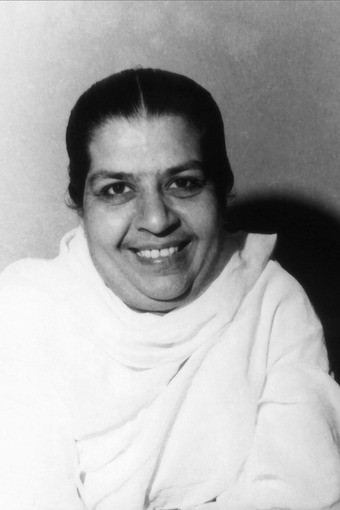
The group had named a 22-year-old woman Radhe Pokardas Rajwani (known as “Om Radhe”) as its president, and her management committee was made up of eight other women. People from any caste were allowed to attend meetings. The group also advocated that young women had the right to elect, not to marry and that married women had the right to choose a celibate life. In tradition-bound patriarchal India, these personal life decisions were the exclusive right of men.
Opposition to Om Mandali
A committee headed by a number of important male members of the Bhaibund community began to form in opposition and became known as the ‘Anti-Om Mandali Committee’. On 21 June 1938 this group picketed Om Mandali’s premises preventing members from entering. This caused considerable upheaval in the community. Women attending were verbally abused, there was an attempt to burn the premises down and the police made several arrests. Many women and girls were later victims of domestic violence in their homes. The picketing resulted in criminal proceedings being taken against both groups, and on 16 August 1938 the local District Magistrate ordered that Om Mandali be prevented from meeting. This ban was reversed on 21 November 1938 after an appeal to the Court of the Judicial Commissioner of Sindh. In an unusual move the judges directly criticized the District Magistrate for trying to punish the victims for the disturbance caused by the perpetrators and for trying to apply the law according to his own personal bias.
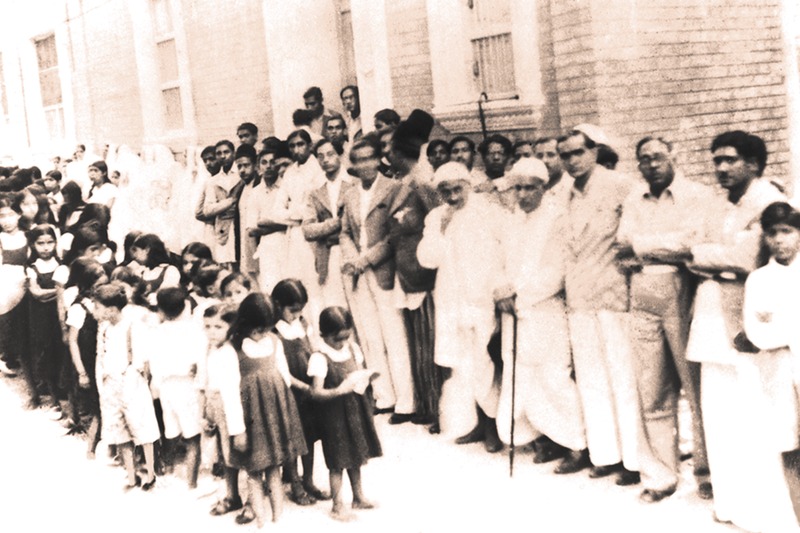
In 1938, an angry mob set one of Om Mandli’s buildings on fire. In an increasingly sour atmosphere, Om Mandali had decided to leave Hyderabad and gradually relocated its activities to Karachi in the latter half of 1938. Approximately 300 members moved.
On 31 March 1939 the government appointed a tribunal to inquire into the activities of Om Mandali. When the Tribunal made its findings, Om Radhe responded by compiling a book titled ‘Is this Justice?’ criticizing the tribunal, which did not have a constitutional basis and made its findings without taking evidence from Om Mandali. In May 1939 the government used the tribunal’s findings to effectively reinstate the ban, declaring Om Mandali an “unlawful association” under section 16 of the Criminal Law Amendment Act 1908. Nevertheless, Om Mandali continued to hold their Satsangs, and the government did not enforce it. Possibly because of this the committee then hired someone to kill Om Baba, but the attempt was unsuccessful.
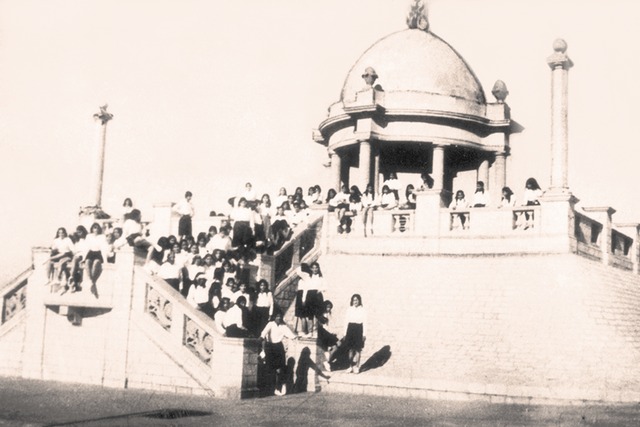
Partition and Migration
In 1950, a few years after partition, Brahma Baba moved the community around him from Pakistan to its current world headquarters in Mount Abu in the Aravali Mountains of Rajasthan in India where the organization was renamed as ‘Brahma Kumaris’. From there, he began to send out women teachers to establish centers in other parts of India.
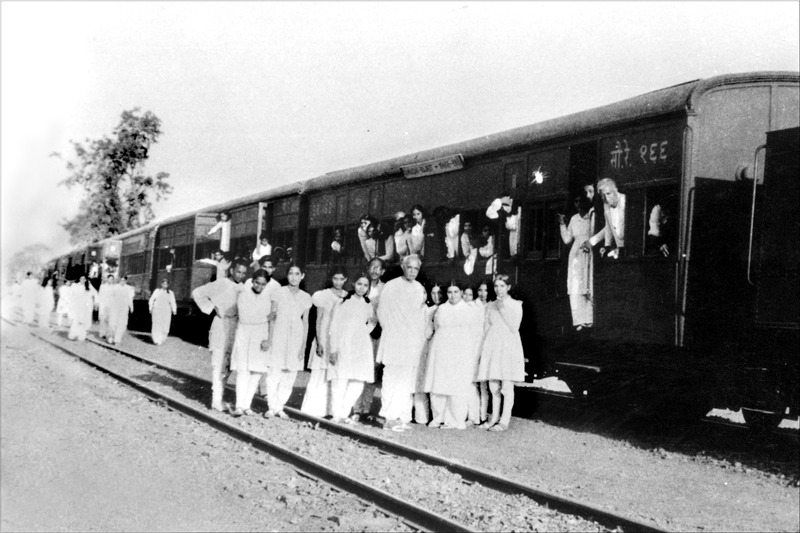
When the founder, Brahma Baba, passed from this life in January of 1969, the leadership of the community continued under the wise guidance of the original group of young women, who came to be called “Dadis,” (senior sister in Hindi). This transition to leadership by the sisters was mandated by the founder, and it proved to be a deep and stable foundation, protecting the organization and preserving their sacred knowledge and practices in an ever-more-turbulent world.
From the beginning, the organization’s focus had been on education, not worship, and for this reason it renamed itself as Brahma Kumaris World Spiritual University. In 1952, after a 14-year period of retreat, a more structured form of teaching began to be offered to the public by way of a seven lesson course.
Expansion
In 1971 the Brahma Kumaris began establishing missions outside India. Women continued to hold most of the senior leadership and administrative positions. Today the group is led by three female devotees who joined the movement in the 1930s – Dadi Janki, Dadi Hirdaya Mohini (popularly known as Gulzar), and Dadi Ratan Mohini. However, the Brahma Kumaris stress that men are welcomed and can be found in most administrative and organizational roles.
In 1980 the Brahma Kumaris became registered as a Non-Governmental Organization with the United Nations Department of Public Relations. In 1983 the Brahma Kumaris achieved consultative status with the Economic and Social Council at the United Nations.
The majority of Brahma Kumaris members originates from and lives on the Indian subcontinent, but the BKWSU is a global organization with a significant presence in the UK, Kenya, South Africa, Australia, Russia, and the North and South America. The movement claims to have over 800,000 students at over 7,000 centers in 110 countries. Many “centers” are in the residences of committed followers.
The Brahma Kumaris came to Britain in 1971 under the name of their main practice, Raja Yoga. The International Coordinating Office is located in London. Currently, there are Brahma Kumaris centers in over forty locations in Britain, including retreat centers near Oxford and in Worthing.
In Britain, the Brahma Kumaris offer a variety of courses in meditation, positive thinking, leadership development, stress management and self-esteem. These courses generally appeal to middle-class professionals though people from other backgrounds also attend. Most people first come into contact with the Brahma Kumaris through one of these courses. Many do not have any other involvement with the movement, while others become dedicated to the Brahma Kumari teachings and lifestyle.
There are different layers of membership, members being referred to as students at all levels. In 2004, the Brahma Kumaris reported approximately 1,500 active members and 100 teachers in Britain. In the 2011 UK National Census, 442 individuals gave their religion as “Brahma Kumari” (in the 2001 UK census it was 216).
All Brahma Kumaris centers carry child-protection policies, in accordance with the laws of their respective countries and cities.
Motto
To foster a spirit of human brotherhood – every human being, irrespective of their religion, their race, their gender or their nationality, can draw profound inner strength from a relationship with their eternal Parent, the Divine.
To support the betterment of the human condition by remaining fully engaged in our communities and to support programs, projects and initiatives with this rediscovered inner strength.
To establish a relationship between human beings and the environment based on the principle of non-violence.
Every soul, regardless of the religion, is spiritually molded by his or her relationship with the Supreme, and their understanding and practice of faith and life experiences. The way forward is a return to the spirituality at the heart of the great faiths. In practical terms, this would mean living the highest ideals that faith inspires within souls – of love, compassion, truth and non-violence.
The basis of the movement’s beliefs is that the practice of Raja Yoga will bring a mental union of the individual soul with God or the Supreme Soul (Shiva) and create natural peace and happiness. The Brahma Kumaris teach that there is only one God and God’s fundamental form is a point of light; this single God (Shiva) was purely manifested through Brahma Baba and now manifests in Brahma Kumari Gulzar, also known as Dadi Hirdaya Mohini. Indian philosophical concepts of karma and reincarnation have an important place within the Brahma Kumaris’ belief system.
According to the Brahma Kumaris’ teachings, the root of all human tragedy and suffering is believed to be due to “body consciousness”. The Brahma Kumaris attribute the vices of lust, anger, greed, attachment and ego to the individual having “body-consciousness” rather than being established in “soul-consciousness.” When one is in a state of “soul-consciousness” it has qualities of love, peace, happiness, truth, bliss, and purity.
Since Brahma Baba’s death, the Brahma Kumaris believe that he, together with the Supreme Soul, has continued to communicate through the medium of member Dadi Gulzar (b. 1929), who has been a member since 1937.
Millennial Beliefs
According to the Brahma Kumaris’ teachings, time is eternal but progresses through cycles (Yuga) related to spiritual purity. There are four such periods, the Gold, Silver, Copper, and Iron ages. The Brahma Kumaris teach that we are now at the cusp between the most spiritually degenerate time, the Iron Age (or Kali Yuga) during which the world is predicted to be destroyed by nuclear war or natural catastrophes, for example, and that of a new Golden Age. They call this phase the Confluence Age and believe it is a time in which God will descend to earth and become manifest in the form of Brahma Baba. The Brahma Kumaris teach that the entire cycle is completed every 5,000 years and that each soul is destined to replay exactly the same actions in their reincarnations during the next 5,000-year cycle. On several occasions, the Brahma Kumaris have prophesied exact dates for the “transition” that will signify the beginning of the next Golden Age and millenarian beliefs continue to be an important part of the Brahma Kumaris worldview.
Practices
Members are strongly encouraged to practice meditation and spiritual study for an hour or two daily and to attend events at their local center on a regular basis. The Brahma Kumaris also describe the practice of Raja Yoga as “a way of life” and encourage members to integrate their meditation into their daily life. Officially, there is no “dress code” but modest dress is strongly encouraged and most senior staff and committed members wear all white “as it reflects the inner aspirations towards living a life of simplicity, purity, cleanliness and truth”.
Ideally, a Brahma Kumaris would rise at 4am for the first meditation practice of the day, attend the 6am group meeting at a Brahma Kumaris center and also practice meditation at various points throughout the day (called “Traffic Control”). Followers often use “Om Shanti” as a greeting, which they translate as “I am an eternal and peaceful soul.” In India Brahma Kumaris membership can offer an alternative lifestyle for Indian women who do not accept an arranged marriage or are widowed, though today the membership is frequently comprised of families.
_____________________
Source: Critical Dictionary of Apocalyptic and Millennial Movements, CenSAMM, Brahma Kumaris Blog Posts, Wikiwand, Brahma Kumaris, Scroll, Free Library
